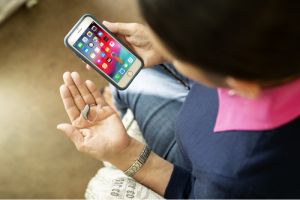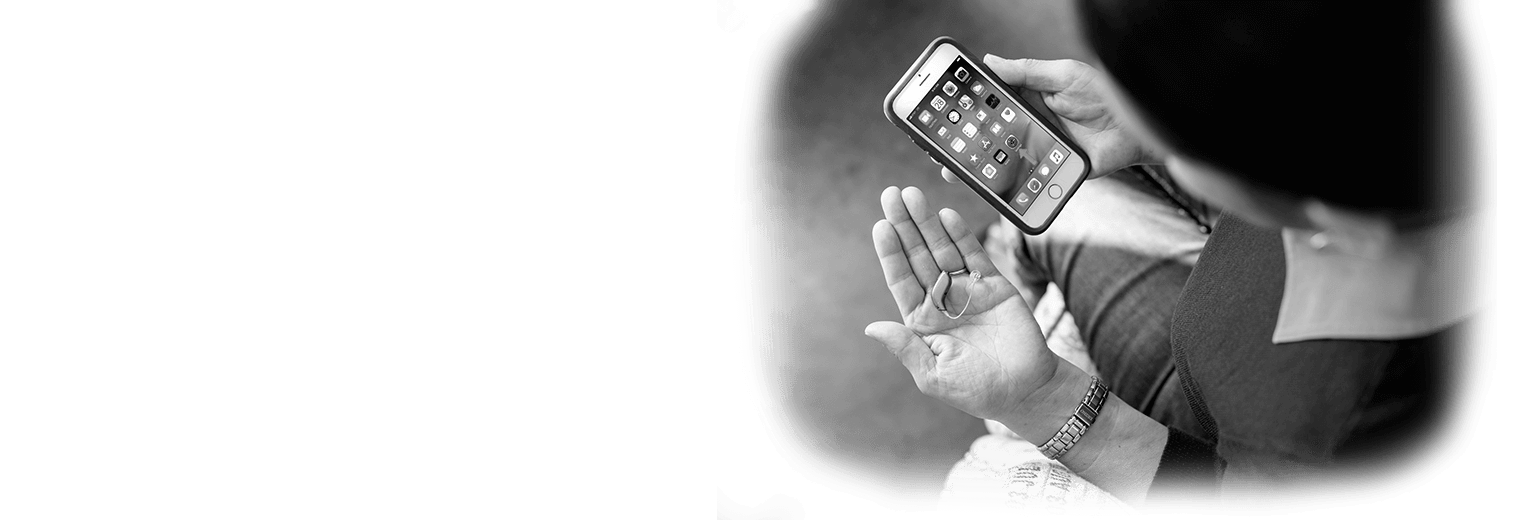|
www.HealthyHearing.com |
Hearing aid compatible phones
By Joy Victory, managing editor, Healthy Hearing Last updated on: August 23rd, 2023 A hearing aid compatible phone makes it easier to stay in touch with family and friends. But finding the best phone for you depends on several factors. Are you in the market for a hearing aid compatible phone? Finding the best phone for you depends on several factors: Are you looking for a cell phone, or a landline phone? Are you a frequent or infrequent phone user? Is your hearing impairment mild, moderate or severe? 
hearing aid compatible (HAC). Because the technology is always changing, we recommend collaborating with your hearing healthcare professional, who can likely suggest options for you and even help you set up your cell phone's connection with your hearing aid. Also, plan to try out different phones when shopping, testing various models to see which one works best for you. Smartphones are hearing aid compatibleThese days, cell phones—also known as smartphones, wireless phones or mobile phones—are by far the most common type of phone purchased these days. New models and features are constantly evolving, and fortunately the FCC requires all of them to be hearing aid compatible (known as HAC). Smartphones for mild or moderate hearing lossIf you have mild or moderate hearing loss (most people with presbycusis, or age-related hearing loss, fall into this category), you are in luck: You probably don't need to do anything special to use your hearing aids with a phone, thanks to technology known as "acoustic coupling." In simple terms, this phrase means you use the phone as normal, and your hearing aid microphone will automatically pick up the sound coming from the phone. The downside? It also may pick up some background noise. When shopping for a phone, look for what's known as the M rating for hearing aid compatibility. The M rating ranges from 1 to 4, with 4 being the best compatibility. A higher rating means less distracting noise and feedback coming in, but some unwanted noise is still possible. M3 is perhaps the most common rating—all iPhones currently on the market are rated this at this range, for example. T-coils for severe hearing loss (or if you want a really clear signal)If you have more severe hearing loss—or you use the phone a lot and/or want a really clear signal—you will want to make sure the "telecoil" in your hearing aid is turned on. Telecoils direct sound to the hearing aid’s processor without using the microphone. It can improve the signal-to-noise ratio while eliminating the potential for feedback. Your telecoil may automatically switch on or it may require you to manually switch into the telecoil or “T” mode. Ask your hearing healthcare provider for more details. This is something you'll want to test out when trying out different phones, too. If you plan to use the telecoil feature, look for what's known as the T rating for hearing aid compatibility. The T rating also ranges from 1 to 4, with 4 being the best. Many cell phones today are T4. BluetoothIf you would prefer to route the sound through special technology like Bluetooth, you'll need to make sure your hearing aid is capable of working with the associated technology. Not sure if you want it? Find out what Bluetooth is and how it works with hearing aids. Special landlines (including cordless) for hearing aid usersGood news: All workplace, public and emergency phones must be HAC, as required by the FCC. But, if you're on the market for a home phone, you'll want to make sure the model you're buying is marked as HAC. Also, look for the same rating system described above (M and T ratings) to determine the level of compatibility. This goes for both regular phones and cordless phones. While landlines don't offer the portability of mobile phones, they do generally provide excellent sound and reliability, since you're not beholden to a choppy cellular network or internet signal. There are countless models that are marked as HAC, and many will have extra features for the hard of hearing, like extra-loud ringers or flashing lights for incoming calls. Other features to consider
How to find a phoneHearing aid compatible phones are available through many different providers, and you can check your specific service's website for the best phones. Mobile phone companies will have a list of phones that are best for hearing aid wearers. Ask to try any cell phone before committing to buy because interference can change depending on location. You may need to try a few before deciding on one. The highest possible rating is M4/T4. You also can check with your local hearing care provider for help and recommendations regarding hearing aid compatible phones. They can provide advice in the context of your specific needs, and they can help you learn how to use your chosen devices for best results. Joy Victory, managing editor, Healthy Hearing
You are reading about: Related topics
More information about hearing loss, hearing aids, hearing aid brands and tinnitus. Featured clinics near me
Earzlink Hearing Care - Reynoldsburg Find a clinicWe have more hearing clinic reviews than any other site! Related contentThe Healthy Hearing Report |
|
www.HealthyHearing.com |
Hearing aid compatible phones
By Joy Victory, managing editor, Healthy Hearing Last updated on: August 23rd, 2023 A hearing aid compatible phone makes it easier to stay in touch with family and friends. But finding the best phone for you depends on several factors. |



 Joy Victory has extensive experience editing consumer health information. Her training in particular has focused on how to best communicate evidence-based medical guidelines and clinical trial results to the public. She strives to make health content accurate, accessible and engaging to the public.
Joy Victory has extensive experience editing consumer health information. Her training in particular has focused on how to best communicate evidence-based medical guidelines and clinical trial results to the public. She strives to make health content accurate, accessible and engaging to the public.